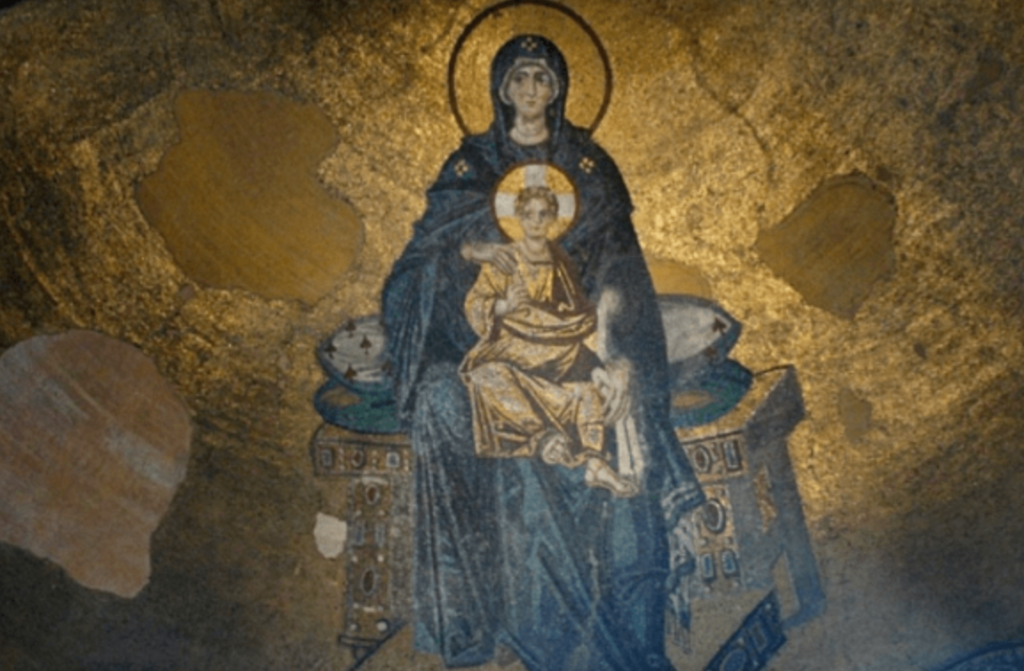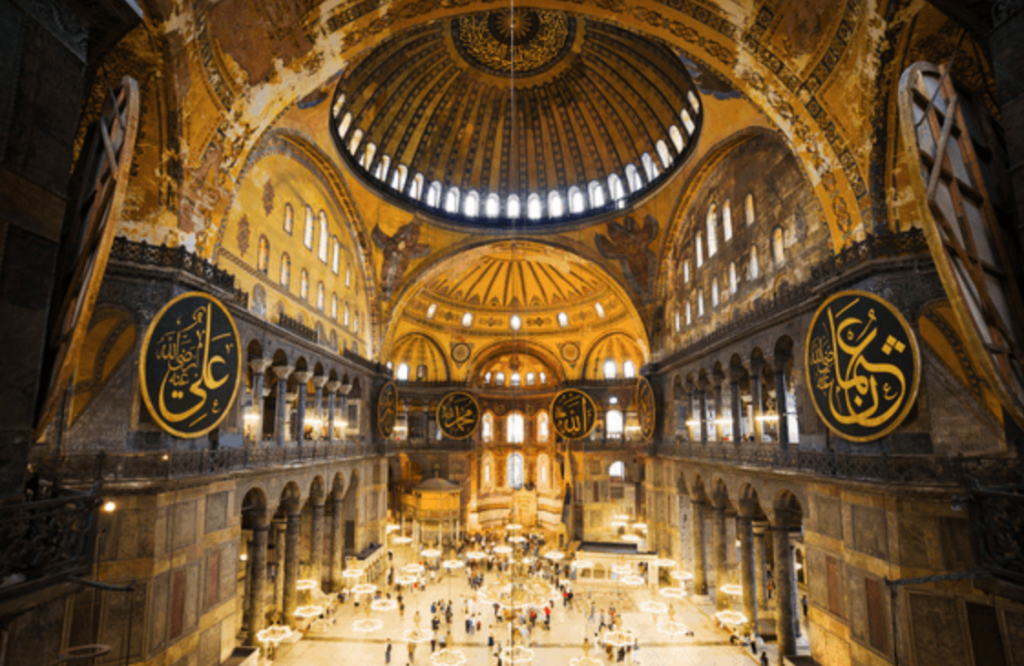
Hagia Sophia, for almost 1,000 years was the largest Greek Orthodox Christian church in the world. Unfortunately nothing remains of the original Hagia Sophia, which was built in the fourth century by Constantine the Great.
Constantine was the first Christian emperor and the founder of the city of Constantinople, which he called “the New Rome.”
Hagia Sophia was one of several great churches he built in important cities throughout his empire.
Following the destruction of Constantine’s church, a second was built by his son Constantius and the emperor Theodosius the Great.
This second church was burned down during the Nika riots of 532, though fragments of it have been excavated and can be seen today.
Hagia Sophia was rebuilt in her present form between 532 and 537 under the personal supervision and order of Emperor Justinian I.
This order was given on February 23, 532.
It is one of the greatest surviving examples of Byzantine architecture, rich with mosaics and marble pillars and coverings. After completion, Justinian is said to have exclaimed, Νενίκηκά σε Σολομών (“Solomon, I have outdone thee!”).
The architects of the church were Isidore of Miletus and Anthemius of Tralles, who were professors of geometry at the University of Constantinople.
Their work was a technical triumph, even though the structure was severely damaged several times by earthquakes.
The original dome collapsed after an earthquake in 558 and its replacement fell in 563. Steps were taken to better secure the dome, but there were additional partial collapses in 989 and 1346.
Justinian’s basilica was both the culminating architectural achievement of Late Antiquity and the first masterpiece of Byzantine architecture.
Its influence, both architecturally and liturgically, was widespread and enduring in the Eastern Orthodox, Roman Catholic, and Muslim worlds alike.
For over 900 years Hagia Sophia was the seat of the Orthodox Patriarch of Constantinople and a principal setting for church councils and imperial ceremonies.

In 1204 the cathedral was ruthlessly attacked, desecrated and plundered by the Crusaders, who also ousted the Patriarch of Constantinople and replaced him with a Latin bishop.
This event cemented the division of the Greek Orthodox and Roman Catholic churches that had begun with the Great Schism of 1054.
It also means that most of Hagia Sophia’s riches can be seen today not in Istanbul, but in the treasury of St. Mark’s Basilica in Venice
Despite this violent setback, Hagia Sophia remained a functioning church until May 29, 1453, when Sultan Mehmet the Conqueror entered triumphantly into the city of Constantinople.
He was amazed at the beauty of Hagia Sophia and immediately converted it into his imperial mosque.
Hagia Sophia served as the principal mosque of Istanbul for almost 500 years. No major structural changes were made at first.
At some early point, all the faces depicted in the church’s mosaics were covered in plaster due to the Islamic prohibition of figurative imagery.
Various additions were made over the centuries by successive sultans.
Sultan Mehmed II built a madrasa (religious school) near the mosque and organised a waqf for its expenses.
Extensive restorations were conducted by Mimar Sinan during the rule of Selim II, including the original sultan’s loge and another minaret.
Mimar Sinan built the mausoleum of Selim II to the southeast of the mosque in 1577 and the mausoleums of Murad III and Mehmed III were built next to it in the 1600s.
Mahmud I ordered a restoration of the mosque in 1739 and added an ablution fountain, Koranic school, soup kitchen and library, making the mosque the centre of a social complex.

The most famous restoration of the Hagia Sophia was completed between 1847-49 by Abdülmecid II, who invited Swiss architects Gaspare and Guiseppe Fossati to renovate the mosque.
The brothers consolidated the dome and vaults, straightened columns and revised the decoration of the exterior and the interior.
The discovery of the figural mosaics after the secularisation of Hagia Sophia was guided by the descriptions of the Fossati brothers, who had uncovered them a century earlier for cleaning and recording.
The Fossatis also added the calligraphic roundels that remain today.
They were commissioned to calligrapher Kazasker Izzet Efendi and replaced older panels hanging on the piers.
In 1934, under Turkish president Kemal Atatürk, Hagia Sofia was secularised and turned into the Ayasofya Museum.
The prayer rugs were removed, revealing the marble beneath, but the mosaics remained largely plastered over and the building was allowed to decay for some time.
Some of the calligraphic panels were moved to other mosques, but eight roundels were left and can still be seen today.

A 1993 UNESCO mission to Turkey noted falling plaster, dirty marble facings, broken windows, decorative paintings damaged by moisture, and ill-maintained lead roofing. Cleaning, roofing and restoration have since been undertaken.
Greece and the world have strongly denounced the conversion of Hagia Sophia into a mosque.
Despite international condemnation, Turkish President Recep Tayyip Erdoğan led the first Muslim prayer in Hagia Sophia in 86 years on Friday, 24 July 202O.
Recognised as a 'day of mourning', the Greek Foreign Affairs Ministry called the conversion “a blow to humanity’s cultural heritage.”
Source: Sacred Destinations
